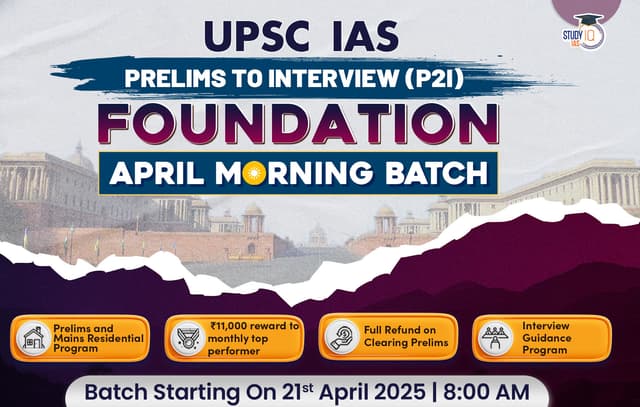The Hindu Newspaper Analysis for UPSC

The Hindu Newspaper Analysis 27 May 2023
- The World Meteorological Organization (WMO) released two reports titled “Global Annual to Decadal Climate Update 2023-2027” and “State of Global Climate 2022.”
- In 2022, it was 1.15 degrees above the baseline, and by 2027, the average will exceed 1.5 degrees, a critical point beyond which there may be no return.
- The 1.5 degree Celsius target is the global climate target that aims to limit warming to said level by 2100, in order to prevent the planet from slipping into further climate crises.
- In 2010, at the Cancun COP16 , countries agreed to limit the global average warming to below 2 degree Celsius. In 2015, the parties to the Paris Agreement pledged to limit the average temperature rise to below 2 degree, while actively aiming for 1.5 degree above pre-industrial levels. This was endorsed as a global target by the Intergovernmental Panel on Climate Change (IPCC) in 2018 and since then has been pursued in all climate dialogues.
- Frequent and intense heat waves, droughts, heavy precipitation, an additional 10-centimetre rise in sea level, destruction of ecosystems and mostly irreversible changes can be witnessed at the 2 degree level.
- The pandemic pushed the world into a socio-economic crisis. On the road to recovery, countries pledged measures to build-back. However, in most cases there is little to no consideration for building-back in a sustainable manner. The Ukraine conflict has further added to woes and sparked an energy crisis threatening climate goals.
- According to the Climate Change Performance Index 2023, India ranked eighth with a high-performance after Denmark, Sweden, Chile, and Morocco.
- Published by German Watch, New Climate Institute and Climate Action Network International based in Germany.

- The recent G-7 summit put forward a united West plus Japan view on China. Besides condemning its “economic coercion” and “militarisation activities”, it created a new group to deal with hostile economic actions, mainly by China, to coerce nations.
- Technology denial to China is one aspect of the strategy. The other is to turn the old Consensus on its head by protectionism and a new industrial policy based on state subsidies.
- A third element is to reach out to China and claim that all that Washington wants is to “de-risk and diversify” its economy, and guard its key technologies using a “ small yard,[with a] high fence”.
- S. estrangement with China enhances India’s geopolitical value, something the present ruling dispensation is revelling in.
- But while the Sino-American hostility may bring benefits to India, a breakdown would be catastrophic, for not just India but also the world.
- New Delhi is not unaware of this and has stepped carefully in its own relationship with China, whether at the global and regional levels or the Line of Actual Control in Ladakh.

- In a recent incident, a man from a city in Maharashtra allegedly killed his 12-year-old sister because he mistook period stains on her clothes as a sign of a sexual relationship. The incident is indicative of the extent of misinformation about periods in India’s urban locales.
- India has been a front runner for action on menstrual hygiene — governments, NGOs and the private sector have all played an important role in spreading awareness and providing menstrual products.
- Poor awareness, stigma and shame, limited access to products, lack of personal hygiene, poor toilet and water facilities, and difficulties in disposing pads can cause anxiety, discomfort, and infections, and long-term health problems. Menstrual waste management is a looming concern given the growing use of disposable sanitary pads.
- Female-friendly community and public toilets are gaining popularity. ‘She Toilets’ in Telangana and Tamil Nadu and ‘Pink Toilets’ in Delhi provide safe, private, clean facilities with essential amenities needed to manage periods. Waste disposal and management remain a challenge.
- Some prominent gaps remain unaddressed in urban spaces: reaching people living in unregistered slums, pavements, refugee camps and other vulnerable conditions in urban areas. Worksites, both formal and informal, need to cater to the menstrual needs of women who work. Support should continue for innovations in menstrual waste management that are safe, effective and scalable.
- As we marked May 28 as Menstrual Hygiene Day, let us come together to shape the narrative on menstrual health as vital to personal health, public health, and human rights for all.

- The United Nations observed the 75th anniversary of its peacekeeping missions last Thursday. During a ceremony to pay tribute to the more than 4,000 peacekeepers who have died on duty.
- The first military observers were sent by the UN Security Council to oversee the Israeli-Arab Armistice Agreement in May 1948. Indian troops and experts have played a significant role in the UN’s peacekeeping missions. Data show that since the inception of UN peacekeeping missions, most of the lives lost during peacekeeping missions due to malicious acts were of Indian troops.
- In total, 1,115 peacekeepers have died on the field due to malicious acts, of which 69 were from India followed by Chad (64), Ghana (53), Nigeria (44) and Pakistan (44). In total, 4,298 peacekeepers have died — 1,481 due to illness, 1,386 due to accidents, 316 due to other causes, and the rest due to malicious acts.
- The United Nations Operation in the Congo (ONUC) between July 1960 and June 1964 proved to be the deadliest for Indian troops and experts, with 15 dying due to malicious acts.
About:
- When the UN Security Council approved the deployment of UN military observers to the Middle East in 1948, the UN Peacekeeping Forces were established.
- UN peacekeeping forces aid nations in negotiating the perilous transition from war to peace.
- To carry out several missions approved by the UN Security Council (UNSC) and the UN General Assembly, it deploys soldiers and police from all over the world and combines them with civilian peacekeepers.
- International Day of UN Peacekeepers is celebrated on date 29th May every year.

- Commensurate with global and regional trends, India continues to show a reduction in stunting and recorded 1.6 crore fewer stunted children under five years in 2022 than in 2012, according to the Joint Malnutrition Estimates released by the UNICEF, the WHO and the World Bank.
- However, wasting continues to remain a concern and so does growing levels of obesity.
- Stunting among children under five years in India dropped from a prevalence rate of 41.6% in 2012 to 31.7% in 2022 with the numbers dropping from 52 lakh to 36 lakh. This was accompanied by India’s share of the global burden of stunting declining from 30% to 25% in the past decade.
- The overall prevalence of wasting in 2022 was 18.7% in India, with a share of 49% in the global burden. The prevalence of obesity marginally increased in a decade from 2.2% in 2012 to 2.8% in 2022 with the numbers growing to 31.8 lakh from 27.5 lakh, thereby contributing to 8.8% of the global share. But the overall classification for obesity is low and much lower than the global prevalence of 5.6%.
- Globally, stunting declined from a prevalence rate of 26.3% in 2012 to 22.3% in 2022.

- The JME report says there is insufficient progress to reach the 2025 World Health Assembly global nutrition targets and the 2030 Sustainable Development Goal (SDG) 2 targets and only about one-third of all countries are ‘on track’ to halve the number of children affected by stunting by 2030. Even fewer countries are expected to achieve the 2030 target of 3% prevalence for overweight.
- The decline in stunting in India is commensurate with National Family Health Survey (NFHS)-5 (2019-2021) data which estimated its prevalence at 35.5% as against 38% in NFHS-4 (2016) and 48% in NFHS-3 (2006).

- Faced with a shortage of entomologists, a trickier vector, increased travel, and less than optimal public participation for prevention, the infection geography of dengue, which was restricted to eight States in 2001, currently covers all the States and Union Territories in India. Dengue has now breached the country’s last bastion, Ladakh (with two cases in 2022), senior health officials say.
- The World Health Organization estimates the global incidence of dengue has grown over recent decades, with half of the world population now at risk. The ICMR said that this risk from dengue, which is now endemic in more than 100 countries, has been propelled by several factors, including climate change, increased urbanisation and increased travel.
- Dengue is a mosquito-borne tropical disease caused by the dengue virus (Genus Flavivirus), transmitted by several species of female mosquito within the genus Aedes, principally Aedes aegypti.
- This mosquito also transmits chikungunya, yellow fever and Zika infection.
- Symptoms:
- Sudden high fever, severe headaches, pain behind the eyes, severe bone, joint, and muscle pain, etc.
Wolbachia
- Wolbachia are natural bacteria present in up to 60% of insect species, including some mosquitoes.
- However, Wolbachia is not usually found in the Aedes aegypti mosquito, the primary species responsible for transmitting human viruses such as Zika, dengue, chikungunya and yellow fever.
- Wolbachia is safe for humans, animals and the environment.
How it works?
- This method involves introducing Wolbachia, a type of bacteria, into populations of Aedes aegypti, the mosquito species responsible for spreading dengue.
- When the Wolbachia-infected mosquitoes breed with their wild counterparts, the percentage of mosquitoes carrying the bacterium grows.
- It is not fully understood why the Wolbachia bacterium interferes with the transmission of dengue. One theory is that the bacterium prevents dengue viruses from replicating in mosquito cells.


 The Hindu Newspaper Analysis 6 October 2...
The Hindu Newspaper Analysis 6 October 2...
 The Hindu Newspaper Analysis 5 October 2...
The Hindu Newspaper Analysis 5 October 2...
 The Hindu Newspaper Analysis 4 October 2...
The Hindu Newspaper Analysis 4 October 2...





















